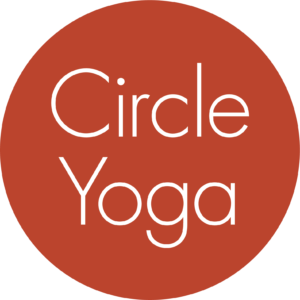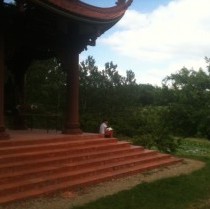July 2014
Dear Friends,
I used to smoke cigarettes, on occasion I still do, and two of my adult children are smokers. I often hear people wonder aloud how anyone can continue to smoke when they know how bad it is for them. The same question is often asked about over-eating, drinking, posting on Facebook, and other habits that often cause suffering but that we can’t seem to stop doing.
I remember once, on a mindfulness retreat, when my son was about eight years old. The kids were asked to draw what they appreciated about their parents, and what they feel sad or hurt about. The thing that my son was most sad about was the fact that I was so often on my computer when he wanted my attention. I felt terrible hearing it, and I’m ashamed to admit it now, but my behavior didn’t really change all that much after hearing this.
Last week, I read an article in the Washington Post about new research coming out of the University of Virginia that helped me better understand this phenomenon. Men and women were told that they would be left alone in a room for 15 minutes without any distractions. The only possible distraction was an unpleasant 9-volt electric shock that they could administer to themselves. The vast majority of men shocked themselves an average of about seven times each. One man shocked himself 190 times in 15 minutes! Of the women, 25{635ce6e164da35558ada9b360ffa3aad1e10c6ad4ce54c35623c30541d8f979b} gave themselves shocks. The researchers were stunned, saying that they almost didn’t include the shocking device because, “I mean, no one was going to shock themselves by choice.”
What they concluded, and which helps me to better understand my unhealthy activities, is that it’s not easy to sit still without any diversions. The practice of meditation has helped me develop more capacity for this skill, but I continue to find it challenging. Over time, meditation increases our ability to be with whatever is arising in our minds and bodies, and it gets easier to sit still without reaching for a cookie or our smartphone.
At least now I can tell the difference between when I am distracting myself and when I am making a choice to do something. If I choose to eat dinner when I am hungry, that’s one thing. If I am working at my computer and decide to go into the kitchen and get some chocolate or a carrot (just did that) out of the need for distraction, that’s different. Getting up and taking a break from something may well be important for our brain and our ability to complete a hard task. The difference is our ability to rationally choose something because we want to do it, and not be compelled to do something because we don’t want to think or feel what we are thinking and feeling.
“TRY TO BE MINDFUL AND LET THINGS TAKE THEIR NATURAL COURSE. THEN YOUR MIND WILL BECOME QUIETER AND QUIETER IN ANY SURROUNDINGS. IT WILL BECOME STILL LIKE A CLEAR FOREST POOL. THEN ALL KINDS OF WONDERFUL AND RARE ANIMALS WILL COME TO DRINK AT THE POOL. YOU WILL SEE CLEARLY THE NATURE OF ALL THINGS IN THE WORLD. YOU WILL SEE MANY WONDERFUL AND STRANGE THINGS COME AND GO. BUT YOU WILL BE STILL. PROBLEMS WILL ARISE AND YOU WILL SEE THROUGH THEM IMMEDIATELY. THIS IS THE HAPPINESS OF THE BUDDHA.” — AJAHN CHAH
Ajahn Chah describes what comes to us when we sit still as “all kinds of wonderful and rare animals,” but sometimes what comes when we sit still is challenging to face. Painful memories, insecurities and worries all surface when we sit still without something to occupy our mind. But he also reminds us that “Problems will arise and you will see through them immediately.” Therein lies our ability to be with what is — when we can “see through” whatever arises. If we see that whatever arises in this moment is just a thought, not reality, we will have the chance to know reality “as it is” without adding our own projections or delusions.
A lot of what we worry about when we sit still isn’t real. As Mark Twain said, “My life has been filled with terrible misfortunes most of which never happened.” Knowing this allows us to touch the positive aspects of the moment that we are in. We can be grateful that we don’t have a migraine, a toothache or someone yelling at us in this moment. If we are sitting still in a room without distraction, we can appreciate the quiet, the way the light is coming into the window, or the solid ground underneath us. When I am working, I often think about how nice it would be to get off the computer, lie down, or otherwise rest. So when I meditate, I remind myself that right now is the rest I had been craving. This helps me relax into a moment of doing nothing. In the Zen tradition, going nowhere, doing nothing, is both the truth of our lives, and the ultimate aim of practice. It doesn’t mean we don’t get things done, we just have the ability to choose what we want to do freshly in each moment.
It’s only when we think there is somewhere else to get to that we feel we need distracting. But, as Jon Kabat-Zinn says, “wherever you go, there you are.” If we allow ourselves to be in the moment that we are in, just as it is, we can relax and find what Ajahn Chah calls “the happiness of the Buddha.” And maybe we won’t have to shock ourselves so much anymore.
with love,
annie.
Read more from Annie at www.rawmindfulness.com.


What a wonderful article….and special thanks for including MEDITATION as ‘something to do!’
certainly, not everybody thinks of it that way.
Recently I had to have a few MRI’s….in those crazy tubular machines with the banging noises. i’m not claustrophobic … but I do like to ‘use’ every waking moment…. knitting, checking email, making phone calls, organizing magazines & newspapers, whatever. don’t like any wasted time.
BUT WHAT TO DO FOR 20-30 MINUTES IN AN MRI TUBE??? MEDITATION was the only answer!
feel free to use my comments.
Beverly Jackson, Washington, DC
Thanks, Beverly. That’s so cool that you used meditation for the MRI. Years ago, I had a couple of MRIs and I wasn’t able to stay in it the first time- I ended up making them take me out. I had better luck the next time, but it took a lot of focus and breath awareness… I imagine it was harder with claustrophobia. xo annie.
Annie – It’s Maureen from CCBC. I just passed this article on to David for sermon inspiration. Who knew that you could write an awesome sermon for a Baptist church?
Maureen, thank you for your note – what a compliment!!! Thank you. Check out more writing on my blog at http://www.rawmindfulness.com. xo a